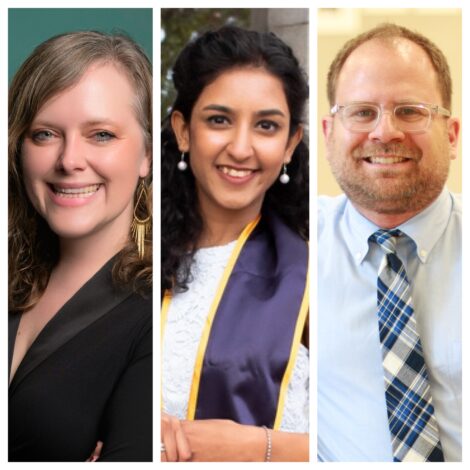Creative Placemaking and the Path to a Liberatory Future

Dec 18, 2024
This year, a2ru will be publishing a series of articles examining the legacy of ArtPlace America, which ceased operations at the end of 2020, and the continuing impact and future potential of its cross-sector research within the evolving field of creative placemaking/keeping.
Vanya Srivastava, Johanna K. Taylor, & Andrew Zitcer
A few years beyond the sunsetting of ArtPlace, we find ourselves at a critical juncture for creative placemaking, asking: Where are we now? What are the uses of this foundational work in our current context? How do we build on what we have learned from ArtPlace’s cross-sector field scans to advance liberatory futures at the intersection of arts and community development? Who leads and convenes these critical conversations and strategy?
The work continues to evolve in response to rapidly changing political, economic, and cultural conditions. Creative practitioners are building new models and frameworks that demand a reevaluation of settled patterns of civic engagement, funding, outcomes measurement and more. The people doing the work are taking the lead; they are not willing to wait for funding streams to dictate what’s possible. Our own work bears this out. We draw strength from our own hybrid identities as scholars/activists/arts administrators participating in myriad networks and communities of practice.
Just in the last few years, we have spoken to leaders in creative placemaking who moved into roles, post-ArtPlace, that demonstrate a continuing commitment to equity and justice across sectors. We work with artists of many disciplinary backgrounds to transform the work of government. Artists around the world are engaging in place based interventions that confront climate change, political polarization, and the housing crisis. Cultural policy is shifting and institutions are paying attention, from Grantmakers in the Arts to Americans for the Arts – just to name a few. This political and cultural moment calls for everyone’s active engagement, from individual culture bearers, to community based organizations, to funders, higher education, and government.
The field of creative placemaking is in transition, facing a new set of challenges and opportunities. However, the core values that underpinned ArtPlace America’s mandate remain as relevant and urgent as ever. These enduring principles make the field scans and related tools worthy of re-examination to ensure their continued value to the field. They are a trove of data and a document of relationships that can be called upon to foster the next phase of the field’s development.
By revisiting ArtPlace’s cross-sector collaboration tools and connecting them to recent developments, we aim to provide a roadmap for practitioners, funders, and policymakers seeking to harness the power of creative placemaking to build more equitable, vibrant communities. In doing so, we’ll explore the enduring value of cross-sector collaboration and call for continued innovation and adaptation in the field, always grounded in the principles of equity and justice that have been central to creative placemaking from the start.
From Field Scans to Action
In re-engaging the field scans in the light of our research, and recent events, here are four big ideas to guide the creative placemaking going forward: promoting cross-sector integration through policy; reimagining philanthropy; comprehensive artist employment; and convening the field.
Promoting Cross-Sector Integration through Policy
The federal government is currently building cross-sectoral policy and programs through its “whole government approach” to address civic needs. We see this in the Department of Transportation’s Reconnecting Communities pilot program which has supported projects that engage arts and design as well as in the Environmental Protection Agency’s launch of an artist residency program at six estuary sites. Cross-sectoral collaboration also resonated deeply with our interviewees, who champion artists and artists administrators working with transportation agencies and planning departments. Others see their work not as creative placemaking per se, framing it as instead as limiting the impacts of climate change or addressing legacies of racially motivated exclusion. This continues the legacy of ArtPlace’s tools which operationalize cross-sectoral collaboration as the central organizing framework for approaching any complex question from immigration to equitable economic development. The field scans highlight Los Angeles Department of Transportation’s artist residency program and Mural Arts Philadelphia’s Project Porch Light arts and health partnership model.
A watershed gathering demonstrates the potential for cross-sectoral approaches to core civic challenges: the Healing, Bridging, Thriving summit in January 2024, organized by the National Endowment for the Arts and the White House Domestic Policy Council. Yet the federal shift cannot sustain the entirety of the field, nor can it be as focused on social justice or racial equity as some communities may desire. This requires that funding for cross-sector work come from beyond the arts sector alone, a turn we see happening as non-arts specific foundations are supporting new work. We have successfully made the case for arts and culture in cross-sectoral work, colleagues across fields want to work with us. Now is the time to actualize our collaborative actions for liberatory futures.
Reimagining Philanthropy
The ArtPlace tools contain a comprehensive framework for generating support across multiple dimensions. As we identified increasing participatory funding models in our research, we see direct ties to the theme of community voice which appears across the tools and to specific examples including: youth-led work at SEEDS Border Youth Dialogue in Nogales, AZ that centers community priorities at the border, and the work of Cooperative Economic Alliance in New York City to support worker-owned businesses in low-income communities.
Community voice and community power are driving the future of the field as the rise of trust-based philanthropy supports creative placemaking. The Culture and Community Power Fund (CCPF), launched in 2022 with support from the Barr, Kresge, and William Penn Foundations, exemplifies the transformative potential of unrestricted, multi-year funding in building community power. They design programs “with the people who are closest to the ground” through deep relationships with six core “grantee-partners.” As CCPF co-director Erik Takeshita articulates: “if you want to work for equitable development, your community placemaking work has to have community power as part of that.”
Other emerging funders like Good Chaos, Builders Initiative, and New Pluralists are entering the field not as explicitly arts funders but with focuses on equity and social impact within communities, giving us an unprecedented opportunity to reshape relationship hierarchies between funders and communities to promote listening and collaboration. Funders are also promoting more opportunities to receive unrestricted funding and are making long-term commitment to communities, structural shifts which are crucial to sustained impact. This is not merely about changing funding mechanisms—it’s about fundamentally rewriting the power dynamics of creative placemaking collaboration models to move beyond superficial engagement to genuine power-sharing.
Comprehensive Artist Support and Employment
The ArtPlace tools identify models integrating artists as workers across sectors and provide a robust framework for analyzing artist roles in non-arts organizations. Project Row Houses in Houston is an example of artist residencies as creative placekeeping. The Little Mekong Asian Business and Cultural District in St. Paul, MN demonstrates the value of immigrant cultural workers in community organizing.
Comprehensive employment programs providing income and benefits for artists has become a central mission among pilot programs experimenting with new artist employment models. This builds on the government-led legacies of the Federal Art Project of the Works Progress Administration (1934-1943) and the Artist Comprehensive Artist Employment Act (1974-1981) which employed artists across sectors during times of economic precarity. In 2022 Creatives Rebuilds New York launched a pilot artist employment program placing 300 artists in salaried positions across the state with support from the worker cooperative Tribeworks. The California Creative Corps regranting program supported 14 organizations across the state to provide work for artists to address core civic challenges from public health to climate mitigation.
The increasing basic income for artists pilot programs that are expanding across the country demonstrates both the urgency and possibility of systemic change in how we value creative work through direct support. Creatives Rebuilds New York (CRNY) operated a state-wide program, finding that artists prioritize paying their bills and eliminating debt so they can focus more on artmaking leading to improved well-being. Similarly, programs led by Maniobra in Puerto Rico and Springboard for the Arts in Minnesota were able to respond to local artist needs and priorities. These programs represent a revolutionary shift from project-based funding to investing in artists as essential workers. As CRNY’s Maura Cuffie-Peterson powerfully articulates, this is vital “safety net work” that builds solidarity with broader movements for worker support rather than treating artists as a separate class of workers.
The ArtPlace field scans laid groundwork for artist integration, and the current moment demands we go further in recognizing artists’ roles in healing trauma, preserving cultural identity, and building community power. This is particularly pressing as all of these programs are designed as experimental pilots and funded through temporary means. Our futures depend on learning from these experimental models to create new opportunities for lasting institutional change. We must move beyond viewing artists as instruments of neighborhood change to engaging them as essential partners in community development, with stable employment, benefits, and clear pathways for advancement. The tools for this transformation exist; now we need the collective will to institutionalize them.
Convening the Field
The sunsetting of ArtPlace in 2020 left a distinct void in coordination and convening that has been felt across the field. Among our interviewees, many called for a central organizing entity to connect practitioners and create a sense of shared purpose in a field that lacks one coherent understanding of what the work is about. This is complicated by the lack of a shared definition of creative placemaking and in some cases a complete dissociation from the concept, and by the extensive range of sectors that intersect with arts and culture and claim connection to the overlapping field.
In the absence of a central organizing body uniting the creative placemaking field, the ArtPlace tools provide a foundation for field coordination and identify collaboration opportunities across dispersed networks. These opportunities continue to be relevant today, such as the exploration of models for distributed leadership such as the Vermont Creative Network’s strategic network building approach.
In a time when we are increasingly less clear on who we are, can a single entity meet the need to convene the field? How can we reimagine what coming together looks like to build clarity and connection without new reinforcing hierarchies? As arts and culture is increasingly integrated across sectors we have renewed opportunities to align around new forms of political power and institutional leadership that promotes voice, power, and agency.
Looking Ahead: A Call to Action
As the field of creative placemaking continues to evolve, several key strategies emerge as possible next steps. One significant opportunity lies in further cross-sector integration. This includes exploring new partnerships with sectors addressing urgent societal challenges, such as climate resilience, mental health, and digital equity. There is also potential for deepening the integration of arts and culture in public policy and planning processes across all levels of government. Additionally, developing more robust evaluation frameworks to demonstrate the impact of creative placemaking across multiple sectors will be crucial for its continued growth and recognition.
However, realizing this potential will require continued commitment (and openness to change) from practitioners, funders, policymakers, and community leaders. We must:
- Deepen cross-sector collaborations, particularly in areas of urgency. The ArtPlace field scan process brought together experts across fields. Why not bring these groups back together to build on that foundational work for a post-pandemic world?
- Reframe the work to build public support. PA Humanities is leading in this area (full disclosure: in partnership with one of us) by framing humanities and arts as a fundamental human right, instead of a narrower economic or social benefit framing.
- Embrace new models of funding that center community power and equity. Sustainable support is a key concern, which can be addressed by advocating for the inclusion of creative placemaking in federal, state, and local funding streams beyond the NEA and state arts agencies, such as HUD or Treasury programs. Philanthropy is a key partner in this work; our partnership with funders to advance participatory and trust-based philanthropy will build on existing momentum.
- (Re) connect the arts to the solidarity economy. Creative placemaking has natural linkages to movements that build worker cooperatives, sponsor community land trusts, support community development financial institutions, and advocate for basic income for artists. By joining the mobilization for the expansion of equitable economic models, we make our work relevant to a broader cultural project.
- Identify or develop an entity to serve as a field convenor and knowledge-sharing hub. We crave collaboration and connection. This entity will support professional development and networking opportunities for creative placemaking practitioners, building knowledge and coordinating action. Higher education anchor institutions could take the lead here.
Conclusion
The field of creative placemaking has undergone a significant evolution since its formalization in the early 2010s. From an early emphasis on economic development to its current focus on equity, community power, and cross-sector collaboration, creative placemaking continues to demonstrate its potential as a transformative approach to community development.
The enduring relevance of ArtPlace’s cross-sector framework underscores the ongoing value of integrating arts and culture across diverse fields of practice. As we look to the future, creative placemaking is well-positioned to address some of society’s most pressing challenges, from climate change to racial equity to economic resilience.
The future of creative placemaking lies in its ability to foster creative democracy, empowering communities to shape their own futures through collaborative, arts-infused approaches to development and problem-solving. As we move forward towards a liberatory future, let us continue to push the boundaries of what’s possible, centering equity, inclusion, and community voice in our work.
About the Authors
 Vanya Srivastava is an urban planner and researcher whose work bridges affordable housing development, public space design, and community-driven planning. Her research examines how innovative financing strategies and collaborative planning approaches can create more equitable urban environments, with a focus on housing solutions and inclusive public spaces for underserved communities. She holds a Master’s in City Planning from the University of Pennsylvania and currently works as an analyst at James Lima Planning+Development, where she develops data-driven strategies for urban district revitalization and public-private partnerships
Vanya Srivastava is an urban planner and researcher whose work bridges affordable housing development, public space design, and community-driven planning. Her research examines how innovative financing strategies and collaborative planning approaches can create more equitable urban environments, with a focus on housing solutions and inclusive public spaces for underserved communities. She holds a Master’s in City Planning from the University of Pennsylvania and currently works as an analyst at James Lima Planning+Development, where she develops data-driven strategies for urban district revitalization and public-private partnerships
 Johanna K. Taylor is a scholar and arts administrator whose work explores how artists and designers collaboratively expand democratic actions in arts institutions and civic systems. Her research explores how arts-led engagement unites stakeholders to shape policy and innovate new ways of working to co-create equitable, shared futures. She holds a PhD in Public Policy and is an Associate Professor at Arizona State University in the Herberger Institute for Design and the Arts. She also is co-founder of CAIR Lab, a creative collective building more just places through arts-led, cross-sectoral collaboration.
Johanna K. Taylor is a scholar and arts administrator whose work explores how artists and designers collaboratively expand democratic actions in arts institutions and civic systems. Her research explores how arts-led engagement unites stakeholders to shape policy and innovate new ways of working to co-create equitable, shared futures. She holds a PhD in Public Policy and is an Associate Professor at Arizona State University in the Herberger Institute for Design and the Arts. She also is co-founder of CAIR Lab, a creative collective building more just places through arts-led, cross-sectoral collaboration.
 Andrew Zitcer is an Associate Professor in Drexel University’s Antoinette Westphal College of Media Arts & Design, where he teaches in Arts Administration and directs the Urban Strategy graduate program. His research explores cultural and economic democracy, and has appeared in Journal Planning Education & Research, Planning Theory & Practice, Antipode and more. His book, Practicing Cooperation: Mutual Aid Beyond Capitalism was published by the University of Minnesota Press in 2021. Anedited volume, Democracy as Creative Practice: Weaving a Culture of Civic Life, was published by Routledge in 2024.
Andrew Zitcer is an Associate Professor in Drexel University’s Antoinette Westphal College of Media Arts & Design, where he teaches in Arts Administration and directs the Urban Strategy graduate program. His research explores cultural and economic democracy, and has appeared in Journal Planning Education & Research, Planning Theory & Practice, Antipode and more. His book, Practicing Cooperation: Mutual Aid Beyond Capitalism was published by the University of Minnesota Press in 2021. Anedited volume, Democracy as Creative Practice: Weaving a Culture of Civic Life, was published by Routledge in 2024.
